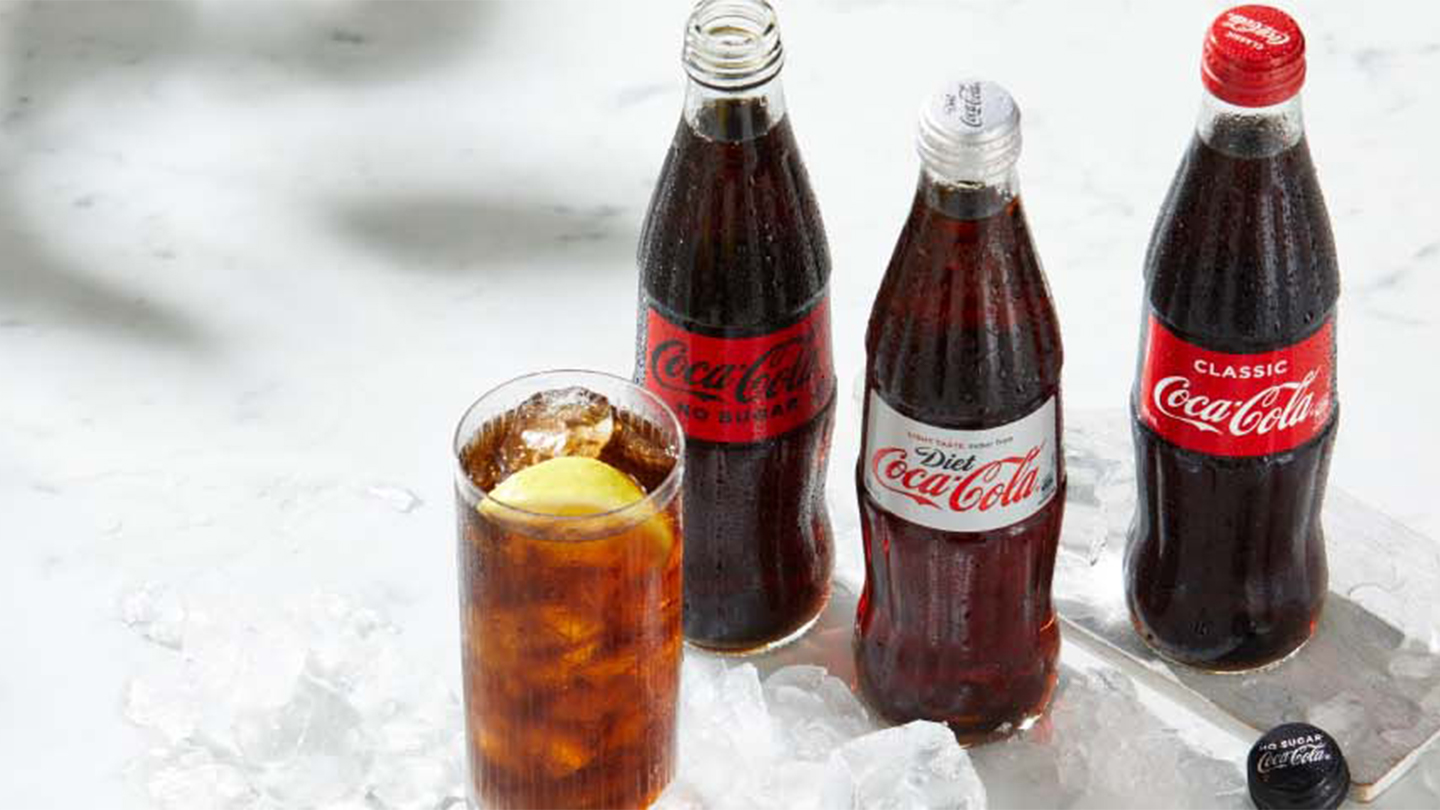
Helping turn the tide on marine plastic pollution
10/6/2022
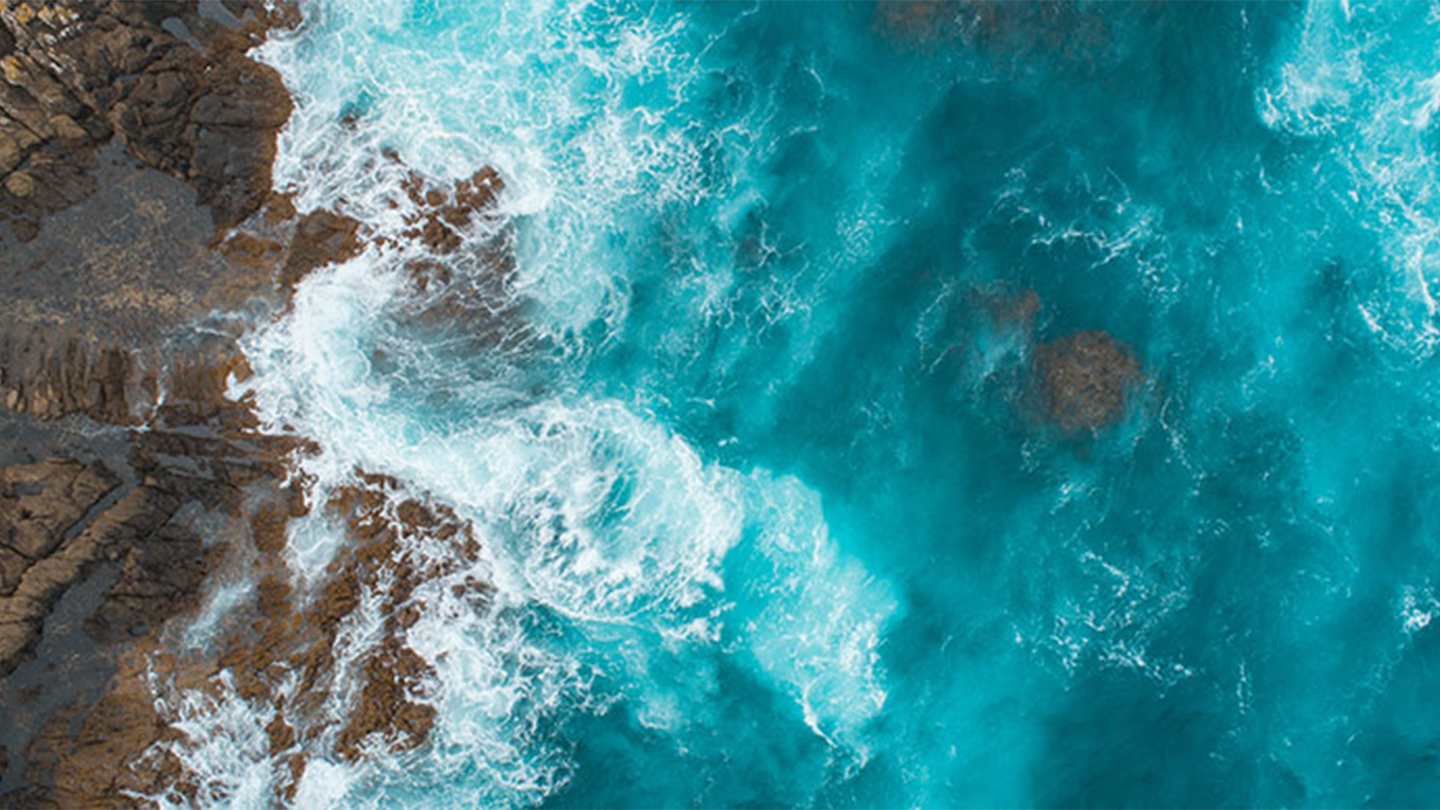
With some of the most breathtaking coastline in the world, it’s easy to see why Australians and New Zealanders are passionate about the ocean, and deeply concerned about marine debris and other plastic that ends up in it.
Right now, our packaging is part of the problem.
This is unacceptable. It’s why we are committed to using less new plastic, and working towards a world without waste. By 2030, our global ambition is to help collect and recycle the equivalent of a bottle or can for every one we sell.
We also want to support partners and technologies that protect our rivers and oceans from plastic pollution. And we’re using our scale to support environmental organisations around the world.
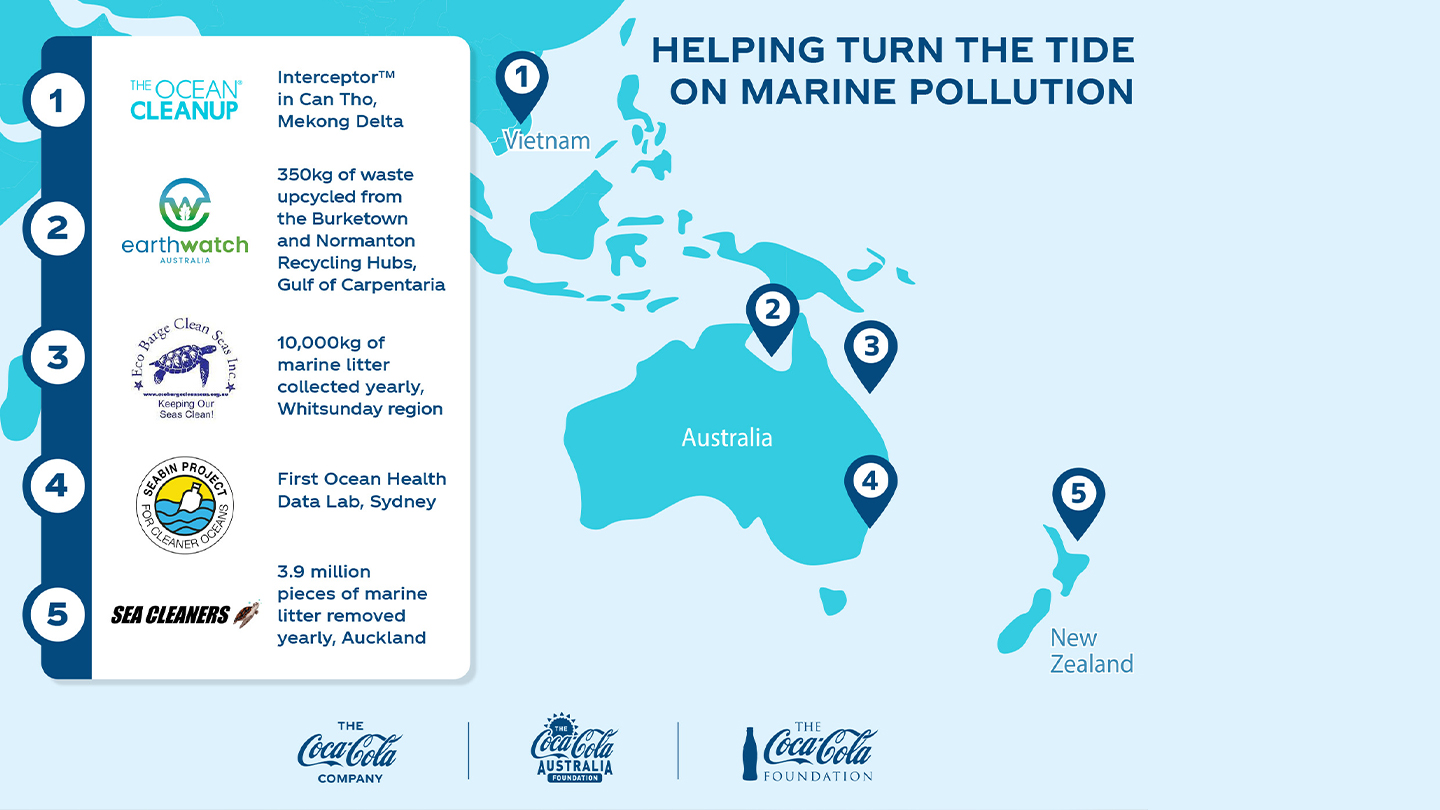
We’re working towards this goal year by year. In Australia, currently 7 out of 10 bottles are made from recycled plastic (excluding caps and labels) and all our bottles and cans are recyclable. We also support container deposit schemes across Australia, which not only reduce marine pollution they give our bottles the best chance of another life.
Global impact with The Ocean Cleanup
Around the world rivers carry a huge amount of plastic and other waste into our oceans.
The Ocean Cleanup Interceptor is the first scalable solution to prevent plastic from entering the world’s oceans from rivers. The solar-powered robot extracts plastic autonomously and is capable of operating in many of the world’s most polluting rivers.
The global partnership between The Ocean Cleanup and Coca‑Cola brings together the technology and data-driven solutions of The Ocean Cleanup, and the global scale and network of Coca‑Cola. The partnership aims to tackle fifteen rivers globally, with the Can Tho River in Vietnam the first announced.
To give you an idea of the scale of a single Interceptor, around 400 kilograms of waste has been removed daily from the Can Tho River since the Interceptor was deployed in January 2022.
So how does the Interceptor work? Take a look.
Meaningful collaboration in Gulf of Carpentaria
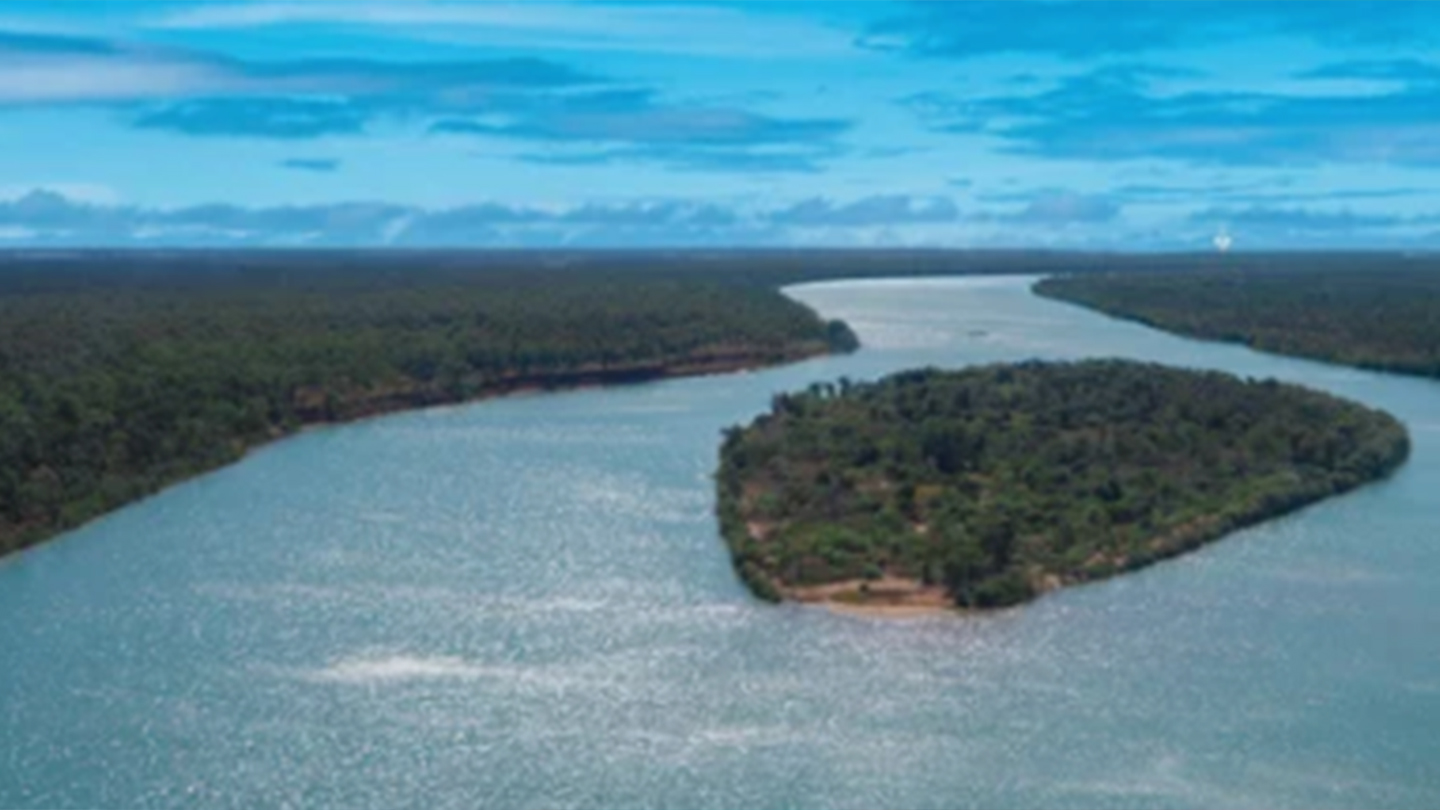
The Gulf of Carpentaria in Australia’s far north covers 300,000 square kilometres of water. It’s a critical coastal habitat for an enormous range of marine animals and is a large carbon sink. This huge area is at risk from increasing amounts of marine litter.
A truly creative collaboration is assisting the Carpentaria Land Council, and Traditional Owners the Gangalidda, Garawa, Gkuthaarn, Kaiadilt, Kukatj, Kurtijar, Lardil, Waanyi, and Yangkaal peoples, to tackle marine litter.
Started in 2020, Coca‑Cola Australia Foundation funded pilot program Wetlands not Wastelands is a first-of-its-kind marine pollution program in the Gulf of Carpentaria.
The community-led program helps reduce marine pollution and recover and upcycle discarded plastic and other materials. The donation helps with recycling and also turning the plastic waste into commercial products.
So far, around 350kg of waste has been upcycled diverting the material from landfill and turning it into a commodity for resale or repurposing it into other reusable materials (or recyclable material). This has the potential to bring financial benefits from these communities.
Want to see how collaborations like this can work? Find out more.
Garbage be gone with Seabin Project
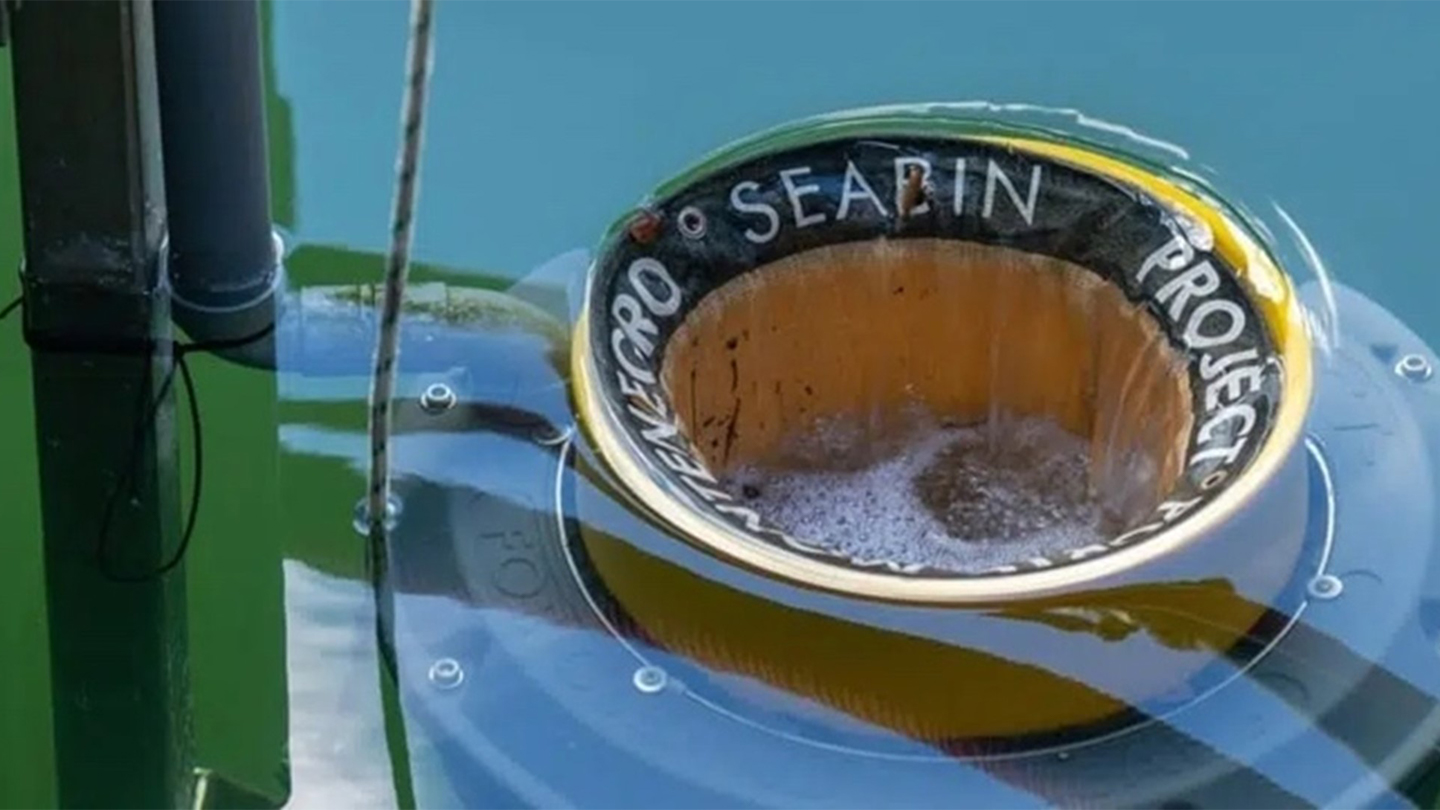
If we can have rubbish bins on land, why not have them in the water? This question led boat builder and co-founder Pete Ceglinski to launch Australian company SeabinTM in 2015, in order to tackle marine litter in public waterways, marinas, and ports.
The Seabin unit is a “trash skimmer” that acts as a floating, automatic garbage bin. Coca‑Cola partnered with Seabin Project in 2021 on their world-first Smarter Cities – Cleaner Oceans Pilot. Furthering the support in 2021, the Coca‑Cola Foundation funded the operations of the Seabin Foundation’s first microplastics scientific laboratory, the Ocean Health Lab. The laboratory has been designed to be completely off-grid, and is contained in a 40ft, purpose-built, upcycled shipping container in Sydney.
The mobile laboratory is a pilot project to add key knowledge about microplastics and provide proof of concept for scalability alongside the Seabin City Program worldwide.
Want to find out how SeabinTM has collected more than 4,000 tonnes of marine litter in 53 countries? Check it out.
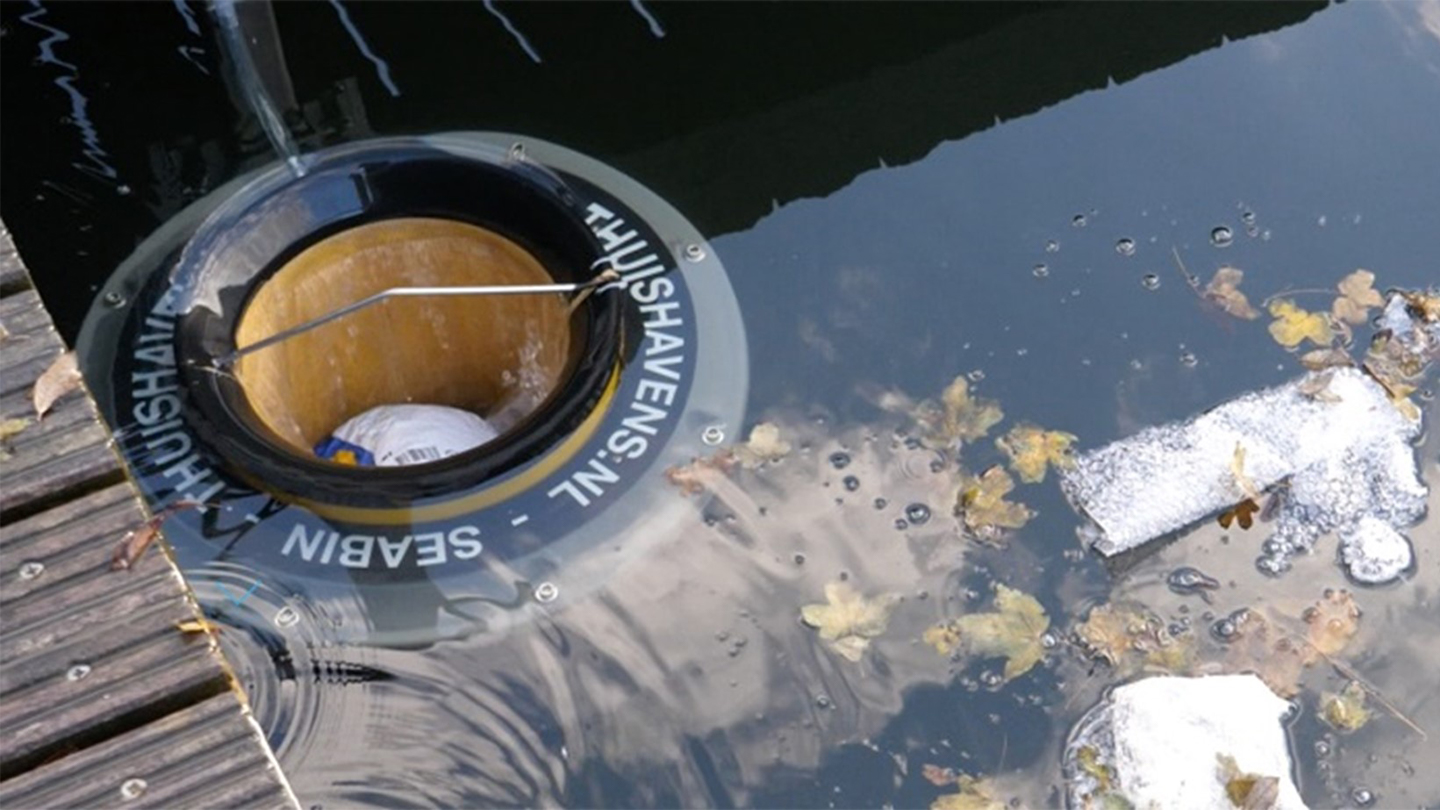
Ground zero with Eco Barge Clean Seas
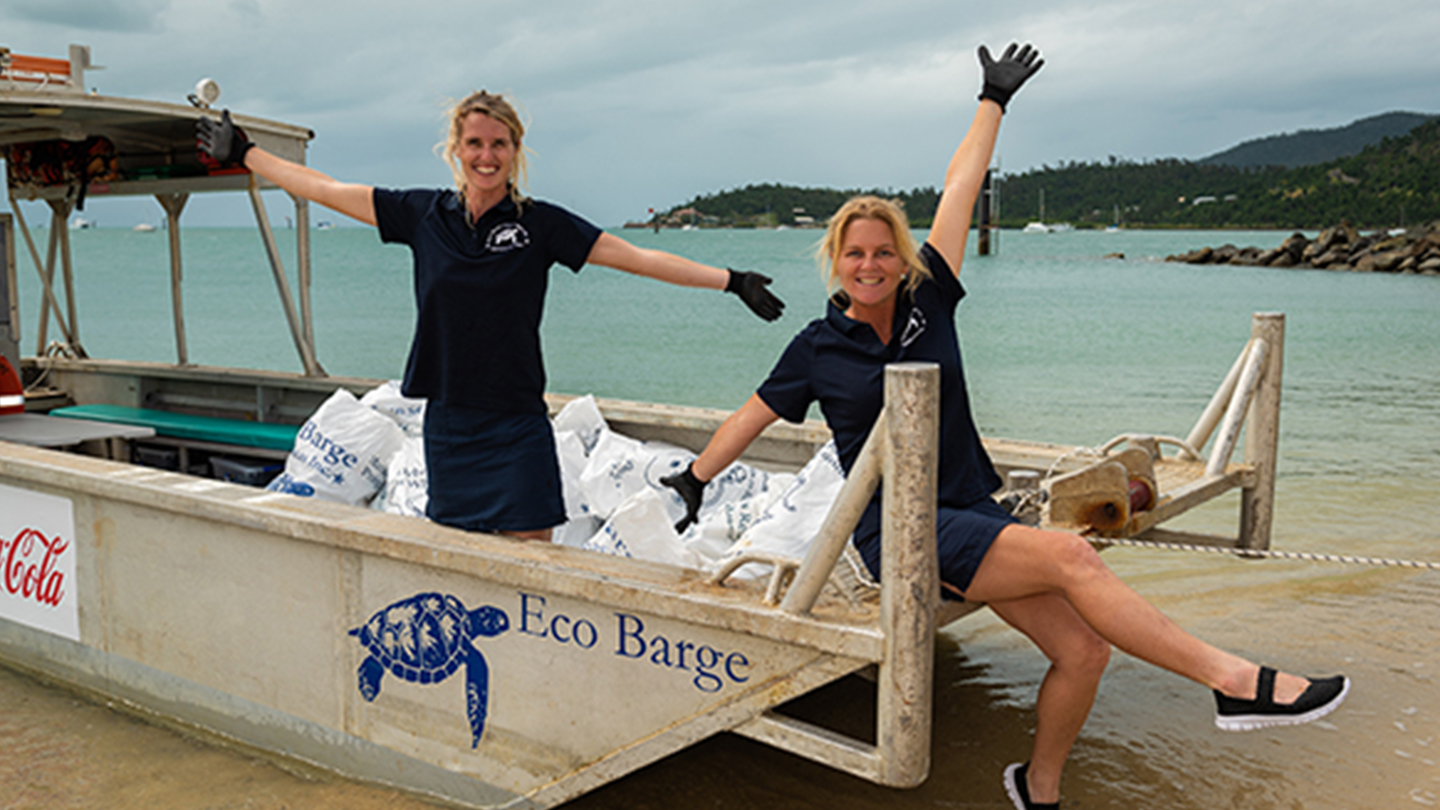
Environmentalist and skipper Libby Edge started Eco Barge Clean Seas in 2009 and has seen almost 240 tonnes of waste gathered by volunteers as a result of her efforts.
Coca‑Cola Australia, with support from the Coca‑Cola Foundation, has been partnering with Eco Barge Clean Seas since 2017 to help clean up over 10,000kg of marine debris from the Great Barrier Reef each year. We’ve also helped ensure that much of the material dredged from the ocean does not end up in landfill.
We’ve connected the organisation with Plastic Collective, whose plastic recycling Shruder is being used to give new life to waste collected by Eco Barge.
About the size of an office desk, this powerful machine, donated to Eco Barge by Coca‑Cola Australia, shreds up plastic for selling on to plastic recyclers, or creating new products. The Shruder is made by the Australian team at Plastic Collective.
So how did Eco Barge take plastic recycling to the next level? Read on.
Power presence with Sea Cleaners
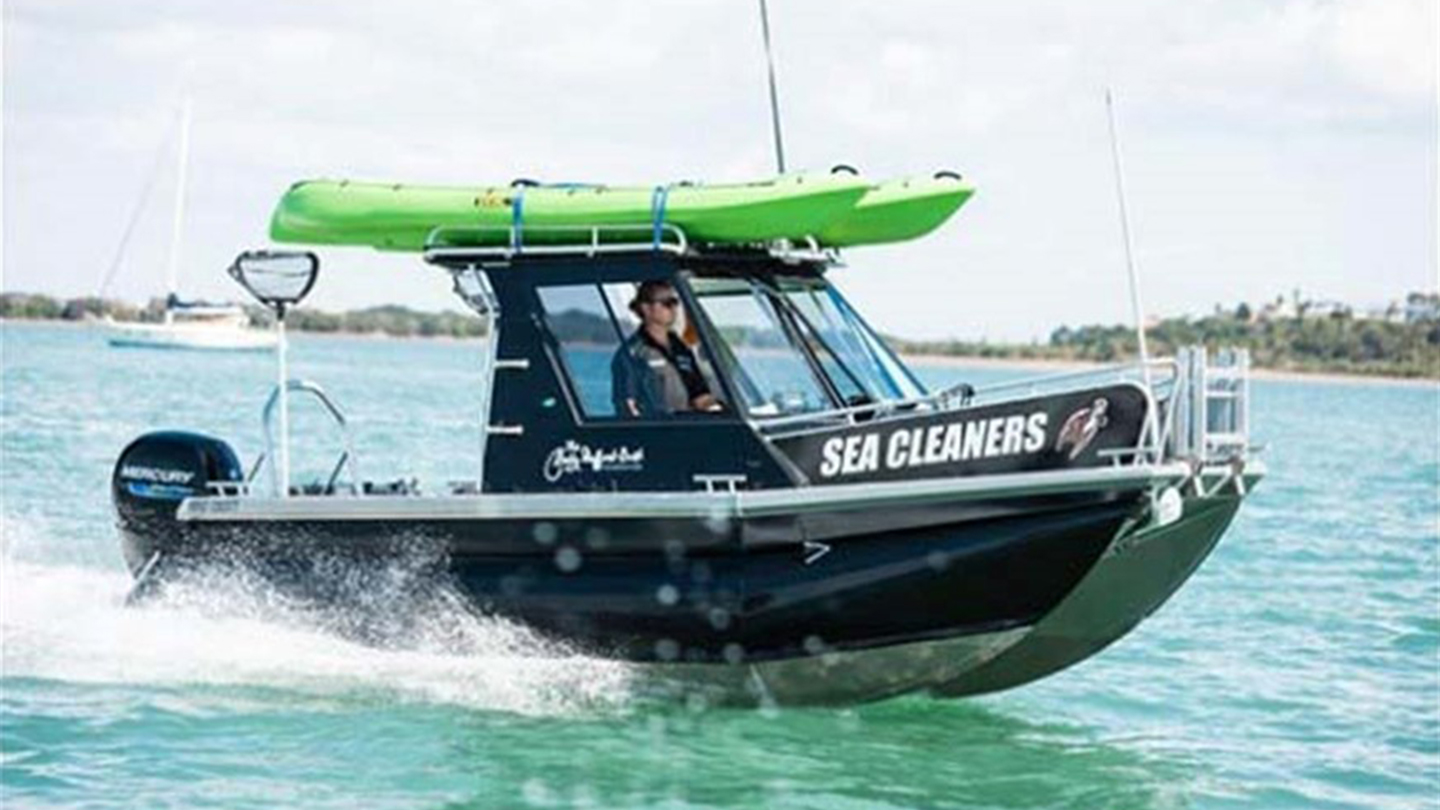
From collecting waste to educating on waste prevention, Sea Cleaners is a group of passionate people preserving the New Zealand coastline.
Their long-term strategy is to educate people to dispose of their rubbish in eco-friendly ways, including recycling, and so not to harm the environment.
Like us, they know there is a problem of litter and rubbish entering our waterways and ultimately contaminating our coastlines and the sea.
Since it started in 2002, Sea Cleaners has collected more than 127 million pieces of rubbish from New Zealand waters.
We’re proud to have been sponsoring those efforts since 2019, when The Coca‑Cola Foundation started a partnership with Sea Cleaners to help get more vessels on the water in and around Auckland, Hauraki Gulf and Kaipara Harbour.
Want to know how Sea Cleaners do it? Click here.
